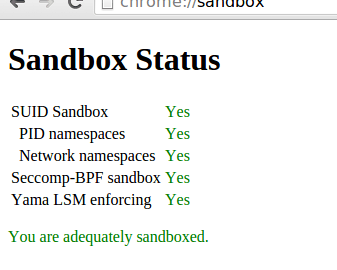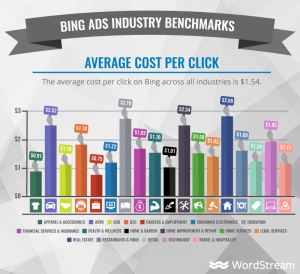What is The Google Sandbox? It’s actually a less known but important phenomenon with newly launched websites. Google Sandbox acts as a temporary filter for new websites before they can go live on Google search results page.

From as far back as 2004, the practitioners of the dark arts of SEO couldn’t decide if Google Sandbox was mythology or the real deal.
Sounds dramatic but so is not getting any search traffic to a brand new website.
Bottom line, the sandbox is a temporary filter for new websites.
And the reason it exists is likely a direct result of SEOs getting too good at figuring out Google’s algorithms. If you know how to immediately rank a website and get traffic, the natural inclination is towards doing that repeatedly with spam sites. That’s the power of the maths.
It’s certainly great for the pizza fund for spammers, but it’s very bad for everyone expecting high quality, accurate search results.

So if Google puts you into the sandbox, there’s really two core outcomes.
Outcome #1 – They reevaluate and find you actually do fit the profile of a spammer or SEO results manipulator.
Outcome #2 – Or you eventually get your release papers, get out of the penalty sandbox, and get to compete in the full Google search rankings.
If it turns out to be option one, then you went too far, and you’re probably penalized in ways that are going to make your time in the sandbox irrelevant.
Doing SEO is risky and if you’re going to do black hat or deeply gray hat SEO, you had better know what you’re doing.
If you don’t get it don’t it. It’s as simple as that. Go white hat and focus on creating great content and doing great marketing.
Now comb your hair over and repeat after me:

We’re publishing on Tuesday. We know you were too grumpy to appreciate that joke on Monday. And who can blame you. We were almost too grumpy to write it.
Does the Google Sandbox Actually Exist?
Most likely it does. We did decide to write a whole article on it so it better be 🙂
If you’re not convinced, you should be. Here’s why:
Google is certainly aware of SEO tactics employed by various pros. The initial discovery and ranking of new websites has to be handled as a special case in their ranking algorithms.
Let’s have fun with an analogy:
Do you act a little differently around people you meet for the first time? Compare that with people you’re always crossing paths with. Familiarity through continued interaction puts you on the path of trust. Prior to that, you can’t tell if someone is a kindly old grandpa or Hannibal Lecter in the flesh.
The same principle holds true for Google search ranking algorithms. They’re not unfriendly just understandably suspicious towards new people. Just consider it new relationships with content instead of people.

Be aware that the sandbox is not to be considered static. Google Sandbox algorithms will be adjusted and modified over time, just like the rest of the search engine ranking factors. Otherwise, Google would have to lay off 10,000 PhD mathematicians. And we can’t have that. That many science geeks out of work would put too heavy a load on Xbox infrastructures everywhere.
Back to the Google Sandbox. If it isn’t clear enough already, we think it’s well established terminology to describe the ranking factors for new sites.
It is a challenge to both optimize a site and also avoid getting pushed into the sandbox for doing so. Once you’re in there, it can take months to escape and begin getting traffic for some of the search keywords for your pages.
Are you getting some traffic but are nowhere to be found for some of your most desired terms?
That’s a decent indication that you’re sitting in the sandbox.
Why is the Sandbox algorithm hitting you?
- Low quality links
- Keyword stuffing
- Duplicate content
- Automated content
- Hidden text or links
- Sneaky redirects
- Cloaking
- Rich snippet spam
- Anything else considered spam by Google
They aren’t picking on you specifically. You’re just the mysterious new kid they’re keeping their eye on. The sandbox algorithms are applicable across the board to all new sites.
In fact, it might be considered somewhat of a confirmation of you heading in the right direction. So actually, you should feel flattered :). Maybe Google thinks the links you are generating are a bit too good to be true?
If you saw a 6-year old answer a college level math question, we might have equally likely tendencies to believe they were either a genius, space alien, or victim of demonic possession.
Cheat sheet: They’re either near-genius-level or have parents that read extremely boring bedtime materials to kids who have a forcibly acquired taste for wheat grass smoothies.

You’re not going to invite them over for a sleepover with your own kids too quickly. That’s the sleepover sandbox for abnormally smart kids.
It may have been the inspiration for the sandbox algorithm… since Google consists almost entirely of people who live blog their critiques of Neil Tyson Degrasse podcast – while writing a just-for-fun thesis on why Batman versus Superman is an insult to the original comics.
Side note: Superman would absolutely crush Batman in about 1/10ths of a super millisecond. It’s not even close.
In the case of spammers who buy and manufacture links in various ways, Google would be rightfully cautious to chuck them into the sandbox head first.
In the case of great content, a solid social media campaign, and savvy marketing people on your site – Google would be wrong.
Or perhaps, “overly cautious.”
On average, they tend to be right. There are certainly more sites that want traffic than there are sites that have earned traffic.
While the sandbox is inconvenient when we are trying to pull in new traffic, as Google users, we benefit greatly from much better search results.
Are you in the sandbox? Google Sandbox and penalty checking tool
Powered by Typeform
What can you do to get out of the Google Sandbox?
- Clear your website of anything considered spam (see above)
- Do white hat SEO and marketing
- Make sure your website is easily scannable and indexable with a sitemap.xml file and robots.txt file and submit them to Google via Google Search Console
- Each one of your web pages needs to have a tag
1.Get rid of spam tactics
The first thing is to recognize that the Google sandbox spans a specific amount of time. Provided you haven’t incurred any search ranking penalties, you will eventually get out of the sandbox just by waiting it out. If, of course, you’re not doing anything spammy or appearing to be spammy.

So don’t assume you’re stuck there for good. The best course of action is actually to continue creating strong content and earning quality links to your site.
Accumulating good links over time continues to increase your search value in the rankings.
If, on the other hand, you’re getting low quality links or using keyword stuffing and other methods listed above then it’s really very simple. Stop. Then go back and remove all of it.
We know links are important and hard to get but try to get the best links possible. The higher quality the site that links to you, the better shot you have at escaping the sandbox. Authority of the linking site has long been recognized as a strong search ranking factor. So this is more of a best practice than a truly enlightening disclosure.
2. Do white hat SEO
The second suggestion we have is also a best practice overall. Try to do some good marketing. The search engines monitor follow as well as no follow links. It’s true that Nofollows don’t add to your search ratings but they do provide some diversity to your link structure which makes it look more like natural links. Social media links, for example, are certainly analogous to “word of mouth” endorsements.
Think about it. Imagine you heard that a site was getting links from a lot of highly reputable sites. And that same site was getting mentioned a lot in social media.
What would you think about that site?
Most likely it would be a fairly good indication that it was just a good site with good content. And Google likes to give traffic to good sites with good content… that don’t spam.
3. Make your website easily scannable
Once you got all the obvious content and link building stuff out of the way you need to remember that Google is based on bots and without proper guidance bots are like Alicia Silverstone: Clueless.

Google Search Console, or the platform previously known as Google Webmaster Tools, is a great starting point for any website regardless of sandboxes or penalties. Here you can upload an XML version of your sitemap that will allow Google bots to better understand your website’s structure and hierarchy. It’s true that Google is getting better at understand your website’s structure but at worst it doesn’t hurt and at best it can get be an important step to get you out of Google’s naughty list. If you don’t have an XML version of your sitemap you can create one with the A1 Sitemap Generator. Or if you have a WordPress website then most SEO plugins, we use Yoast, will create one for you
Once you’ve done that, provide Google with the link to your robots.txt file. In this file, you tell Google’s crawlers exactly which pages you want crawled and which you do not. So if Google mistakenly crawled some pages making it think you had duplicate content or bad links then remove those pages from the prying eyes of its crawlers. Of course, those pages will not be indexed by Google and will not appear in search results.
4. Use the tag
The tag is a tag you want to add to your XML sitemap file. You need to modify this tag with every new modification you make to your website. It helps Google keep track, which is crucial if you’re taking steps to get out of the sandbox.
Now put in the over and wait for at least 7 days, the minimum to getting of Google’s sandbox effect.
Shaking the sand out
So now you have your plan of attack. First, get rid of your spam tactics. Google is on to you so there’s no point of continuing to do it. There are no work arounds. Do not pass go. Do not collect your $ 200. It’s time to join the light side, white hat seo that it.
You can keep building links but you need to do it the white hat way: guest posts, outreach campaigns, and quality content that people want to link to and share. Then, do more marketing: promote your content to your target demographics and get the word out. It might not work as fast as black hat SEO but the way we see it is “once bitten, twice shy.“
Tell us about your experiences getting trapped in the sandbox. How did your traffic change when you broke out?
Digital & Social Articles on Business 2 Community(89)




